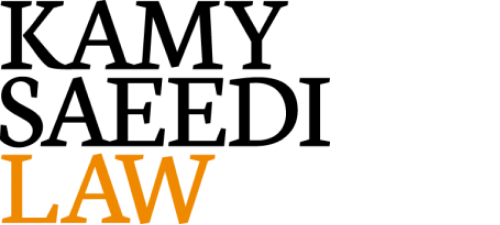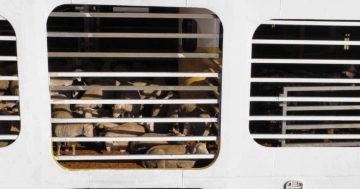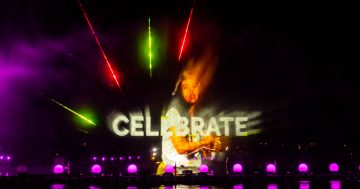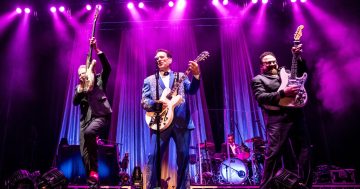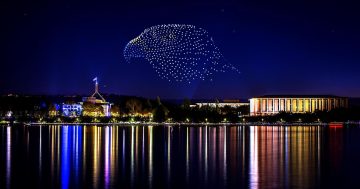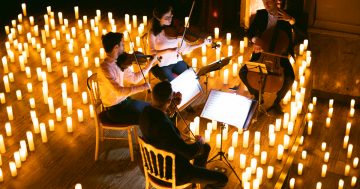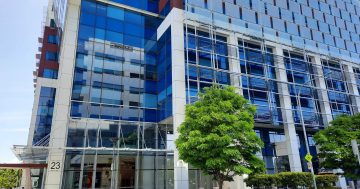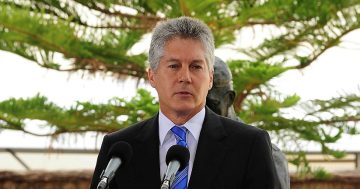
If the argument about potentially dangerous storms raised by the National Australia Day Council in defence of its axing of the Australia Day Live Concert was applied to every outdoor event organised in Australia, most rugby, league, AFL, soccer and cricket matches scheduled to be played in grounds around Australia every weekend should also be cancelled forthwith.
The Australian Open should also go. Music festivals like the Groovin the Moo, the Falls Festival and Splendour in the Grass should be shut down. The New Year’s Eve fireworks in Sydney should be cancelled. I can think of dozens of other examples, but I’m not going to mention them, because I don’t want to give the Federal Government fun police any more ideas.
The Australia Day council’s chief executive officer, Chris Kirby, has told The Canberra Times that weather and safety played a major part in planning for the event, and referred to storms that impacted on the most recent concert, telling reporter Chris Knaus that the weather “brought the event to a standstill and potentially put the public at risk”.
Mr Kirby has made no mention of financial cuts being a factor, but presumably that’s what’s really behind the decision to ditch the event, which has kicked off with the Australian of the Year Awards on the Federation Mall lawns between the Parliament House and the Museum of Australian Democracy every year since 2004.
What we do know is that the organiser has decided to move the Australian of the Year Awards indoors, to an invitation-only function in the Great Hall of Parliament House, removing the opportunity for tens of thousands of Australians to see them presented live, and for the winners to address large crowds in person upon receipt of the accolades.
The only argument I can think of against this event is that its timing commemorates a day that symbolises all that is wrong about our history in terms of the treatment of Indigenous Australians. It was this fact that made being there to see Gurrumul perform at the concert in 2009 and Adam Goodes win Australian of the Year in 2014 mean so much. Those moments are what reconciliation is all about. Hiding them away at a private function is just plain wrong.
I can understand why other cities have argued against the event being held in Canberra. Of course they’d like to host an event of this scale for their residents. But they’re not the capital city of Australia, and the nation’s Parliament House is not available to them as a backdrop.
The ACT Government was right to contribute $100,000 in funding to the concert, and ACT Chief Minister Andrew Barr is right to threaten to pull that funding from the event now unless the decision is overturned.
Though the argument that only Canberrans benefit from the gig is simply not true. Tourists have travelled from interstate en masse to see the likes of Guy Sebastian, Jimmy Barnes and INXS play live on Australia Day Eve ahead of a day experiencing our national cultural institutions. I’ve been to several of the concerts with friends who have driven from Sydney or Melbourne just for the occasion, and I know I’m not alone. Also, the event is televised live across the nation, showcasing the capital city at a time when Australians are thinking about what it means to be a citizen of this great nation.
The concert has long provided one of the few opportunities there are in Australia for families to get together for a picnic while enjoying live music that appeals to the grown ups and the kids. Children dance on the lawns with their siblings, parents and friends on a scale I’ve not seen elsewhere. My children loved this most of all about the concert. They are fans of Bob Evans, Ganggajang, Jimmy Barnes, INXS, Guy Sebastian, Lior and Paul Kelly. When are they going to see acts like that live if not at the Australia Day concert?
It’ll be several years now before they will again be exposed to live Australian music on this scale. They won’t be inviting their parents along for a dance then, either.




